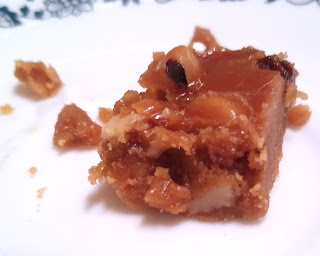We are having a few stovetop-related problems here at Our Kitchen of Cookrye.
What does one do for supper when you can't even boil the tea to drink with it? One turns to the Philadelphia Inquirer Recipe Exchange!
 |
| Philadelphia Inquirer Recipe Exchange, 21 June 1935 morning edition, p. 12 |
| Smothered Cauliflower 16 oz frozen cauliflower 1 16-oz can stewed tomatoes Salt, pepper, onion powder, and chili powder to taste 2 tsp butter, finely cut up ½ cup breadcrumbs 1 c shredded cheese (mozzarella, provolone, or any other kind that melts well) ¼ cup shredded parmesan cheese, if desired Heat oven to 350°. Grease a deep casserole. Cook the cauliflower until tender. You can boil it in salted water. Or, you can put it in a microwave-safe bowl, add one or two spoons of water, shake some salt over it, put a dinner plate on top of the bowl, and then microwave until tender- about 6 minutes. (You won't tell the difference between boiled and microwaved cauliflower.) Mix the (undrained) tomatoes, seasonings, and butter. Place the cauliflower in the baking dish and pour the tomatoes over it. Sprinkle with the breadcrumbs, then with the shredded cheese. If desired, sprinkle with Parmesan. Bake until browned, about 45 minutes. adapted from a recipe by Mrs. J Peterman, 637 W York St Apt 3, Philadelphia Inquirer Recipe Exchange, 21 June 1935 morning edition, p. 12
|
I tried to make do after the stovetop went out of service. We have a gas grill with a little stove burner sticking out on one side, and I gamely tried to make it work. But this happened to the poor frying pan:
And so, we had only the oven, microwave, and a rice cooker until further notice. Hence, baking cauliflower.
The original recipe would have you boil a whole head of cauliflower and then serve it uncut, but the frozen cauliflower was a lot cheaper. We simply popped it into the microwave with a generous spoonful of water in the bottom of the bowl. In the meantime, let's get to the other half of the ingredient list:
I know the recipe just says to use salt and pepper, but I figured Mrs. J. Peterman wouldn't mind a bit of chili powder. She lived a few streetcar stops away from the Italian Market, so surely she wouldn't be stunned at seeing three spice shakers on the counter.
Lastly, we are apparently supposed to mix two teaspoons of butter into this. I thought the butter was meant for the top, but either Mrs. Peterman was not very good at phrasing her recipe or the butter should go with the tomatoes. Maybe it kind of soaks into the cauliflower while everything bakes. Since I had already dirtied the cheese grater getting the top of this casserole ready, I thought it would be easier to intersperse the butter amongst the tomatoes if I shredded it first.
This did not work. All of the dainty butter curls turned into one big butter clump when I tried to stir everything together.
Well the butter broke up and interspersed itself in the canned tomatoes with little spoon-bashing. Less than ten minutes after removing the cauliflower from the microwave, we had a big pan full of vegetables and regularity.
The rest of this came together as easily as dumping canned tomatoes and frozen cauliflower into a pan. I considered toasting some bread and then pulverizing it as we have done before, but decided it is false economy to dry and pulverize half a loaf of bread instead of just buying a canister of crumbs. The cheapest breadcrumbs on the shelf were the Italian-seasoned ones, and who am I to argue with the prices these days?
I figured the breadcrumbs, while dry and sandy before baking, would absorb a lot of the runny stuff that bubbled up from below. The instructions simply tell us to "brown in a moderate oven," which I took to mean we'd be eating this in twenty minutes at the longest. This lovely golden-crisp cheese topping required 45 minutes of baking, so perhaps a higher oven temperature is in order next time.
Readers will note that this recipe is dated June 21. Forty-five minutes is a long time to run an oven in the middle of June in a time when houses do not have air conditioning.
During the three quarters during which we waited, a much better smell than one would expect from cauliflower and canned tomatoes suffused the house. I never thought people would impatiently ask if the cauliflower was ready yet.
This simultaneously tastes exactly like the ingredients that went into the pan and somehow better than them. It's tempting to try adding mushrooms or other things to this recipe, but I highly recommend you first try it as it is. It is so simple but so, so good. As someone else in the house said, "I don't usually go back for thirds, but...."


























































